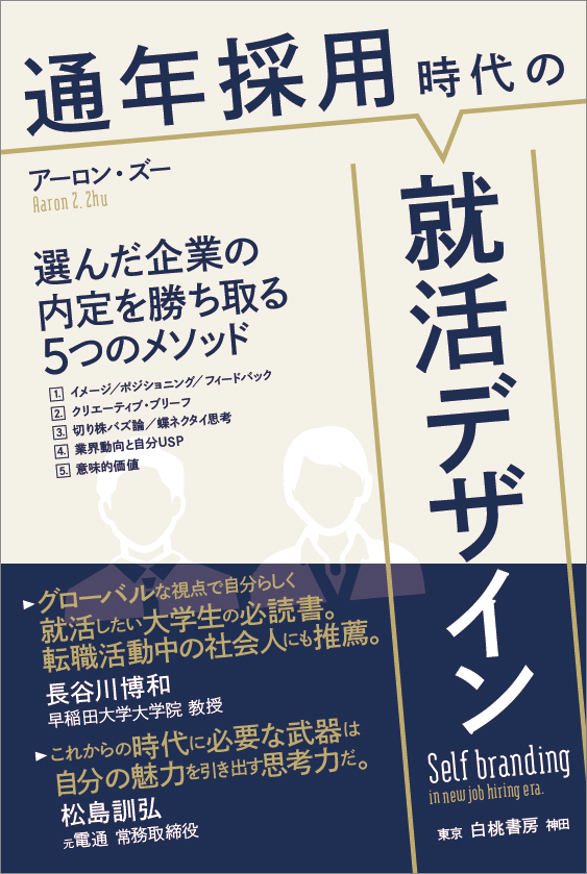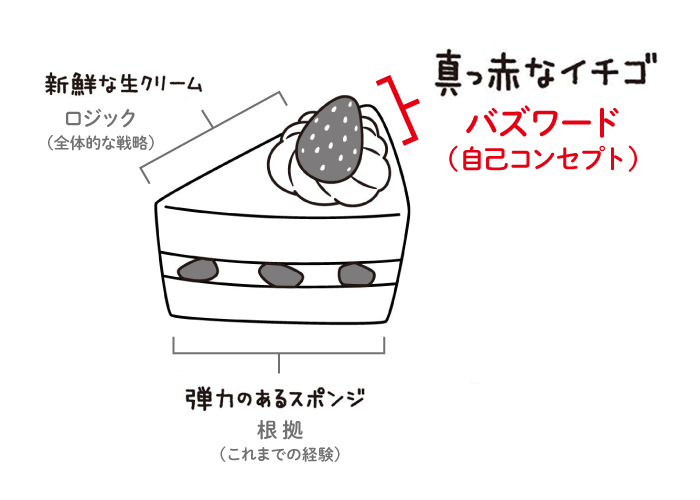This column series accompanies my new book, Job Hunting Design in the Year-Round Recruitment Era (Hakutou Shobo). Over two installments ( Part 1 & Part 2 ), I explained how "shortcake thinking" is essential for conveying your appeal during job hunting. This final installment touches on buzzwords – the "bright red strawberries" on the shortcake.
The Secret to Standing Out Among 20,000 Entries
The biggest headache in job hunting is undoubtedly getting lost among the other applicants. How can you achieve "direct differentiation" from other job seekers? This troubles many students.
At popular companies, some receive around 20,000 applications annually while only hiring about 150 people. To secure an offer by overcoming odds of over 130 to 1, you need a personal concept that sets you apart from other job seekers. In "Shortcake Thinking," I call this the "strawberry" of buzzwords.
When choosing a cake at a shop, the decisive factor is often an intuitive impact—like "the decorative bear was cute" or "the big strawberry looked delicious." Similarly, in job hunting, you need something like a bright red strawberry to make a lasting impression.
To use an advertising analogy, the buzzword is the "headline" or "catchphrase." Whether the "advertisement" that is you catches someone's eye is decided 50%, or at most 75% or more, by the headline. If you don't catch their eye, you'll likely get lost among the 20,000 applicants and end up forgotten.
But don't misunderstand: buzzwords only work when paired with the "logic from your creative brief" (like the whipped cream in the shortcake analogy we discussed last time) and the "solid foundation from your own experiences" (like the resilient sponge). Without these, no matter how memorable your buzzwords are, they'll just be empty.
The Face of Self-Branding is the "Buzzword"
So, how should we think about "buzzwords"? While I explain this in detail in the book, here I'll share the fundamental concept.
Have you ever considered the difference between "self-promotion" and "self-branding"? These two concepts are similar yet distinct.
First, the "PR" in "self-PR" comes from Public Relations, originally meaning "building good relationships with others." In job hunting, those others are companies and recruiters. To get them to understand and accept you, you must appeal to their needs – essentially, show why you are necessary for that company.
On the other hand, the "brand" in "self-branding" refers to elements that distinguish similar things. In job hunting, it's necessary for students to differentiate themselves from other job seekers. The main focus of "self-branding" is "presenting your unique self"; if you can express your individuality (your unique selling point), you achieve the goal.
In other words, "self-PR" alone cannot differentiate you from other job seekers. Everyone says, "I am the talent your company needs." Differentiation comes from highlighting what is unique to you, and that can only be achieved through "self-branding."
Your self-introduction in a job interview is the time for both "self-branding" and "self-promotion." In the interview, it's effective to first discuss who you are through "self-branding," then move to "self-promotion" by explaining how you match the company's needs.
Buzzwords become the face of your "self-branding." When expressing yourself in a short phrase, that word carries multiple meanings. Using a more condensed phrase to describe yourself allows you to make an impression without boring the interviewer.
When crafting your buzzword, you must deeply explore both industry insights and your unique strengths. Positively highlighting yourself creates a lasting impression and can be the deciding factor in getting hired.
The shortcake approach—where logic, evidence, and buzzwords are likened to whipped cream, sponge cake, and strawberries—is essential for self-branding. With the abolition of job-hunting rules, companies can now openly conduct year-round recruitment. Deciding on your target industry early and fully leveraging your appeal through the shortcake approach will be key to securing an offer from your chosen company.

Trim size, 148 pages, Price: ¥1,400 + tax, ISBN 978-4-561-51107-6 C0034






